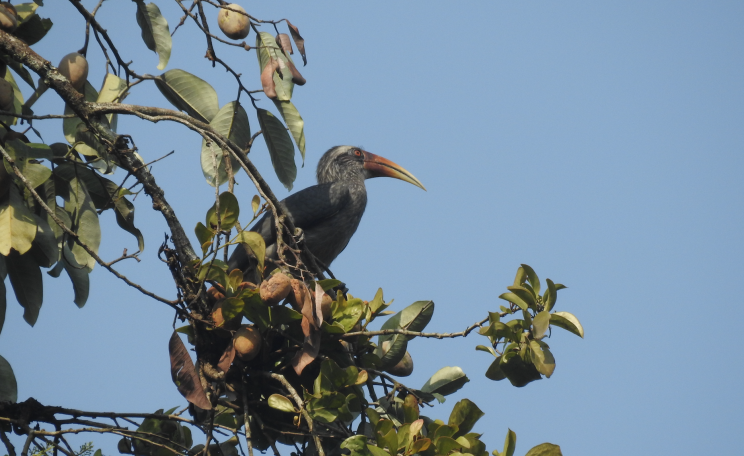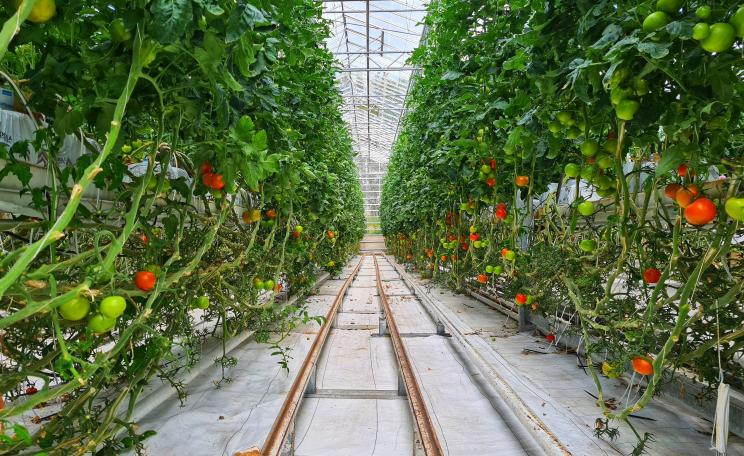Working with nature rather than fighting against it, the approach to organic cotton farming is fundamentally different to the damaging impact of conventionally produced cotton.
Most people never consider that what they wear started life on a farm. But over 50 percent of the clothes sold in the UK are made of cotton, grown by the 100 million cotton farmers across the globe.
Every year they produce 29 million tonnes of cotton – the equivalent of 29 t-shirts for everyone on earth.
But not all cotton is created equal. A spotlight is being shone on an industry that contributes more to climate change than international aviation and shipping combined, as the dark realities of the global fashion industry become harder to ignore. Change is on its way, and organic cotton is at the forefront.
A thirsty crop
Working with nature rather than fighting against it, the approach to organic cotton farming is fundamentally different to the damaging impact of conventionally produced cotton.
Cotton is a notoriously thirsty crop and about 3 percent of all water consumed globally is used growing cotton – it takes an estimated 10,000 litres of water to produce 1kg of cotton, often in countries where access to clean water is already limited. In contrast, a peer-reviewed life-cycle analysis found that organic cotton uses 91 percent less water, requires 62 percent less energy to produce, and overall results in 46 percent less greenhouse gas emissions than its conventionally grown counterpart.
A key practice in organic production that helps to reduce inputs is crop rotation. This is when different crops are grown each season to break cycles of pests and disease and to naturally boost soil fertility.
This helps to create vibrant, healthy soils, meaning that crops can cope better in floods and droughts – something which is becoming even more important as climate change brings more extreme and unpredictable weather patterns.
Crop rotation also means that farmers grow a diverse range of crops alongside cotton. These other crops, grown without hazardous artificial sprays, can be a vital source of food that’s safe for farmers and their families to eat, or it can be sold to provide an alternative income. Because of this, organic farming plays an important role in food security, something recognised by many NGOs, governments and the UN.
Climate change
Organic cotton also helps combat climate change. It all starts with the soil. Organic farmers plant crops that naturally fix the nitrogen from the atmosphere – they don’t rely on artificial nitrogen fertilisers that are highly energy intensive to produce and are damaging to soils.
Organic soils have been proven to be better at locking in carbon from the atmosphere, and in this way, farming organically has a lower impact on the ground as well as helping to mitigate climate change.
Working with nature rather than fighting against it, the approach to organic cotton farming is fundamentally different to the damaging impact of conventionally produced cotton.
The majority of conventionally grown cotton globally is genetically modified. Despite the hype, however, GM has failed farmers around the world.
In India, the world’s largest producer of cotton, widespread crop failures have resulted from pest infestations because target pests have quickly become resistant to the GM crop, or other pests have attacked the cotton.
This has led to dire consequences, with widespread suicides after farmers become trapped in cycles of debt linked to the high cost of GM seed and the chemical treadmill needed to respond to the pest problems that GM was supposed to fix. This has had a devastating impact on families and rural communities across the country and is far too high a price to pay for our clothes.
Working conditions
Farmers are at risk from toxic chemicals in the field - around 14 percent of all insecticides sold worldwide are used on cotton (despite cotton only using 2.5 percent of the world’s arable land). Many of these are hazardous to humans and wildlife and applied by people who can’t afford equipment to protect themselves.
And the problems within the textile industry don’t stop at the farmgate. Workers can also be subject to horrendous working conditions in garment factories, while toxic dyes and inks can seep into rivers and wells, poisoning drinking water and the natural environment.
But organic is different. The Global Organic Textile Standard (GOTS) requires factory workers to be treated according to strict social criteria based on the International Labour Organisation conventions, including minimum wages, working hours, child labour and freedom from harsh of inhumane treatment.
Under GOTS, only low impact dyes and inks can be used, and all water needs to be treated before being released into waterways, protecting the living world and local communities.
At times, the scale of conventional cotton production can make the problems associated with it seem insurmountable. But change is happening across the textile sector.
Global initiatives
Major brands like Superdry and Stella McCartney are committing to only using organic cotton and across the globe ground-up solutions are helping to improve the fashion industry’s impact on the environment and the communities that rely on it.
In the last few years, global initiatives have sprung up to find positive solutions to the challenges posed by the textile industry.
The Sustainable Cotton Challenge commits brands and retailers to source 100 percent sustainable cotton by 2025, and while there are a number of improvement and best practice schemes that fall under the banner of ‘sustainable’, already 10 percent of the brands signed up to the Challenge have reached their target of 100 percent organic cotton.
And for individuals wanting to reduce the impact of the global fashion industry, a huge step in the right direction is to buy organic cotton, preferably carrying the GOTS logo. GOTS is the gold standard for organic textiles globally, so by shopping for clothes with the GOTS logo, you can be sure you’re buying clothes with at least 70 percent organic cotton, manufactured using low impact dyes and inks and made in factories that meet strict social and environmental criteria.
The challenges posed by the global textile industry can appear daunting. But they can be overcome. Organic offers a positive solution that’s gathering momentum across the globe. By buying organic textiles, be it clothes, homeware, or personal care products, UK citizens can know that they are part of a solution that offers a kinder, cleaner and better future for people and the planet.
This Author
Sarah Compson is International Standards Manager at the Soil Association, the UK's largest organic food and farming charity, and has helped to shape international standards on organic cotton and textiles.







